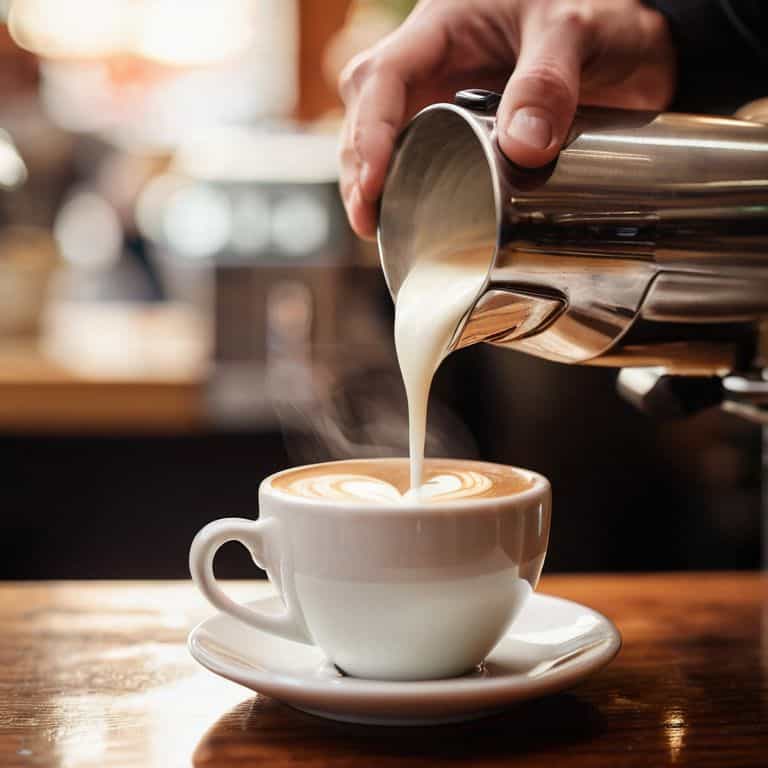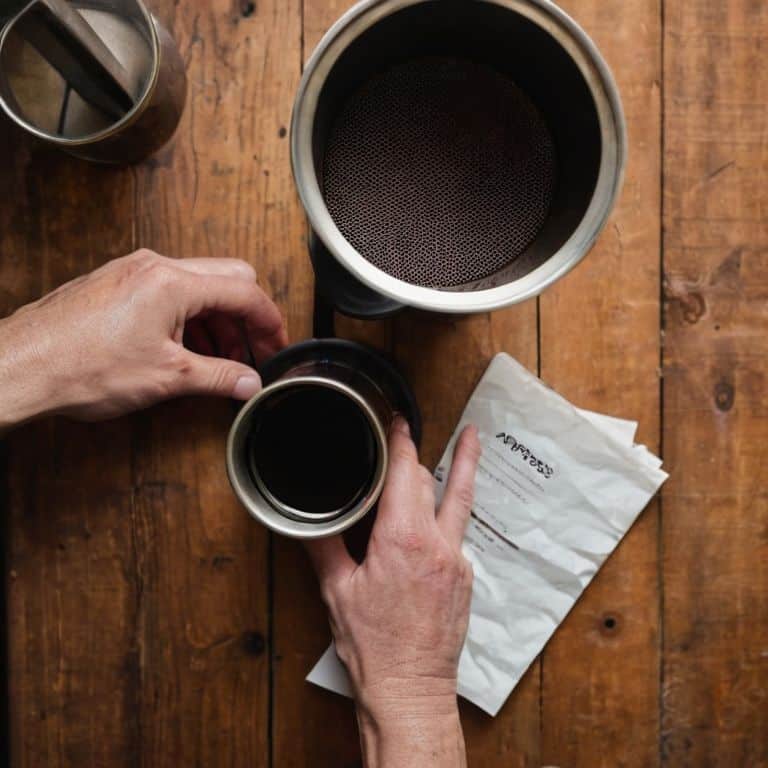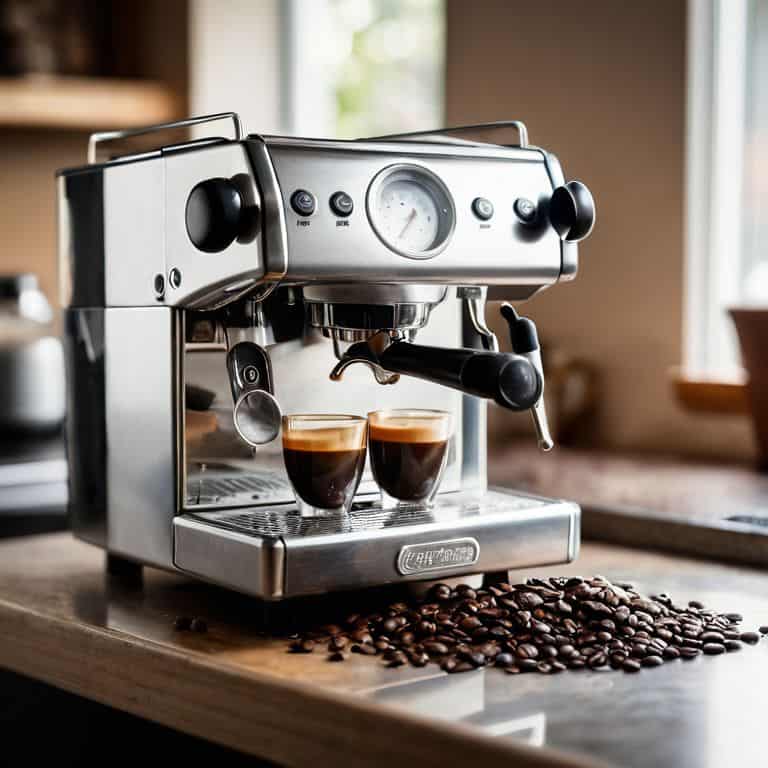I still remember the first time I attempted to grasp the concept of understanding espresso brew ratios. It was like trying to decipher a secret code, with everyone throwing around terms like “optimal extraction” and “perfect balance.” But as I delved deeper, I realized that it wasn’t about following a set of rigid rules or investing in expensive equipment. It was about developing a deep understanding of the intricate dance between coffee and water. I’ve seen many baristas get caught up in the hype, overspending on gadgets and gizmos that promise to simplify the process, but ultimately, it’s the human touch that makes all the difference.
As someone who’s spent years perfecting their craft, I’m excited to share my knowledge with you. In this article, I’ll cut through the noise and provide you with honest, experience-based advice on understanding espresso brew ratios. I’ll walk you through the process of finding your perfect balance, and show you how to taste the difference in every shot. My goal is to empower you with the knowledge and skills to create exceptional coffee, without breaking the bank or getting bogged down in unnecessary complexity. By the end of this journey, you’ll be well on your way to unlocking the secrets of espresso perfection, and I’m honored to be your guide.
Table of Contents
- Understanding Espresso Brew Ratios
- Calculating Perfection Coffee to Water Ratio Calculator
- The Golden Shot Espresso Shot Volume Matters
- Optimizing Your Brew
- Bean There Done That Coffee Bean Roast Level Impact
- Temperature Tango Optimal Espresso Brewing Temperature
- Mastering the Art of Espresso: 5 Key Tips to Unlock the Perfect Brew Ratio
- Key Takeaways for Espresso Perfection
- The Heart of Espresso
- Unlocking the Perfect Shot: A Conclusion
- Frequently Asked Questions
Understanding Espresso Brew Ratios
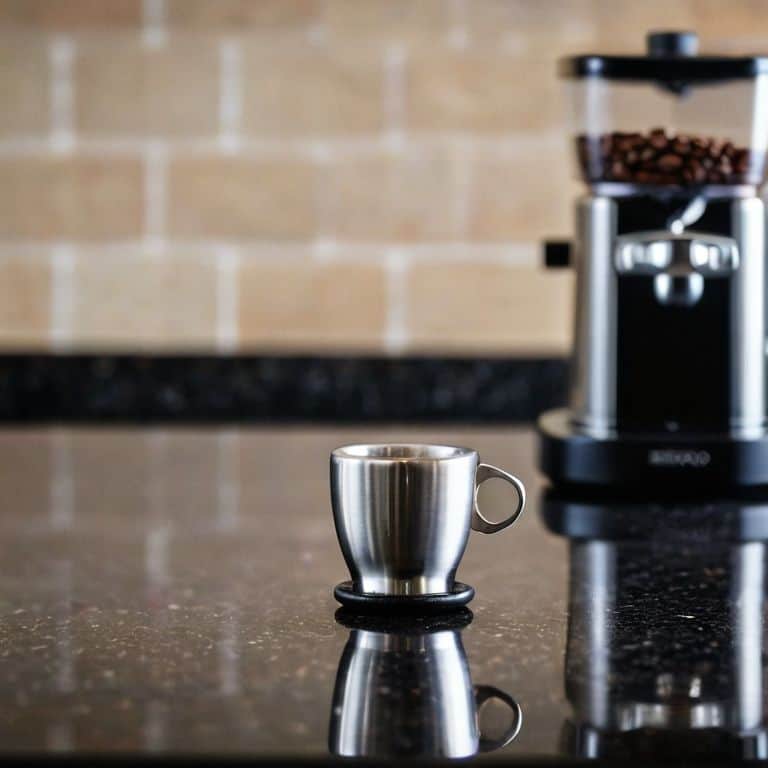
To truly grasp the concept of espresso brew ratios, it’s essential to consider the espresso shot volume. This is the foundation upon which all other variables are built. A typical shot of espresso is around 1-2 ounces, but this can vary depending on the desired strength and flavor profile. I’ve found that using a coffee to water ratio calculator can be incredibly helpful in dialing in the perfect shot.
When it comes to brewing, optimal espresso brewing temperature is crucial. The ideal temperature for brewing espresso is between 195°F and 205°F. If the temperature is too high or too low, it can significantly impact the flavor of the shot. I’ve spent countless hours experimenting with different temperatures to find the sweet spot. Additionally, espresso machine calibration tips are vital to ensure that your machine is producing consistent results.
As a barista, I can attest that even small changes in coffee bean roast level can have a profound impact on the flavor of the espresso. Lighter roasts tend to be more acidic and fruity, while darker roasts are richer and more full-bodied. By understanding how to balance these variables, you’ll be well on your way to mastering espresso brewing techniques for beginners. With practice and patience, you’ll be pulling shots like a pro in no time.
Calculating Perfection Coffee to Water Ratio Calculator
To achieve the perfect balance, I rely on a coffee to water ratio calculator to ensure my measurements are precise. This tool allows me to input the desired shot volume and coffee dose, providing an exact calculation of the ideal water amount. By using this calculator, I can experiment with different ratios and find the perfect balance for my espresso.
When calculating the ratio, I consider the optimal extraction percentage, which is typically between 18% and 22%. This range allows for a balanced flavor, with neither under-extraction nor over-extraction. By adjusting the coffee to water ratio, I can fine-tune the extraction percentage to achieve the perfect shot.
The Golden Shot Espresso Shot Volume Matters
The Golden Shot: Espresso Shot Volume Matters
When it comes to pulling the perfect shot, precise volume control is crucial. A standard espresso shot typically ranges from 28-32 grams, but the ideal volume can vary depending on the roast level, grind size, and desired flavor profile. I’ve found that adjusting the shot volume can make a significant difference in the overall taste and texture of the espresso.
To achieve the perfect balance of flavors, it’s essential to consider the optimal shot duration, which is typically between 20-30 seconds. By combining the right shot volume with the ideal shot duration, you’ll be well on your way to crafting a delicious and balanced espresso that showcases the unique characteristics of your favorite coffee beans.
Optimizing Your Brew
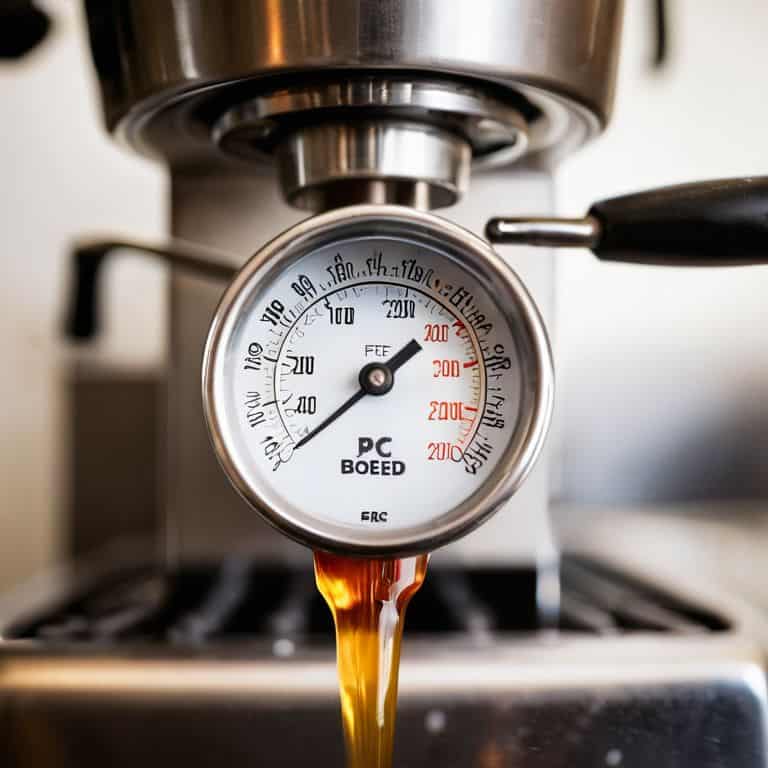
To take your espresso game to the next level, optimizing your brew is crucial. This involves a combination of factors, including optimal espresso brewing temperature, which is essential for extracting the perfect amount of flavor from your coffee beans. I’ve found that even a slight deviation from the ideal temperature can significantly impact the taste of your shot.
As a barista champion, I can attest that espresso machine calibration tips are often overlooked, yet they play a vital role in achieving consistent results. By ensuring your machine is properly calibrated, you’ll be able to dial in the perfect shot every time. Additionally, considering the coffee bean roast level impact on espresso is vital, as different roasts require unique brewing approaches to bring out their full potential.
When it comes to espresso brewing techniques for beginners, it’s essential to start with the basics and build from there. By mastering fundamental techniques, such as monitoring espresso shot volume, you’ll be well on your way to creating exceptional espresso. Remember, practice makes perfect, so don’t be discouraged if it takes time to get the hang of it – with patience and dedication, you’ll be brewing like a pro in no time.
Bean There Done That Coffee Bean Roast Level Impact
When it comes to espresso, the roast level of your coffee beans can greatly impact the final result. I’ve found that lighter roasts can bring out a brighter, more acidic flavor, while darker roasts tend to produce a bolder, richer taste. As a barista champion, I’ve had the opportunity to experiment with a wide range of roast levels, and I can confidently say that it’s all about finding the perfect balance for your taste preferences.
To take your espresso game to the next level, it’s essential to understand how roast level affects extraction. A darker roast, for example, may require a slightly coarser grind to prevent over-extraction, while a lighter roast may require a finer grind to bring out the full flavor potential. By adjusting your grind size and brewing technique to complement the roast level of your beans, you can unlock a world of flavor and create a truly unforgettable cup of coffee.
Temperature Tango Optimal Espresso Brewing Temperature
When it comes to brewing the perfect espresso, temperature control is crucial. The ideal temperature for espresso brewing lies between 195°F and 205°F, and even a slight deviation can affect the flavor. I’ve spent countless hours experimenting with different temperatures to find the sweet spot.
To achieve optimal extraction, it’s essential to maintain a consistent temperature. This means not only using a thermometer to monitor the temperature but also ensuring that your equipment is preheated and ready for brewing. By doing so, you’ll be able to bring out the full potential of your coffee beans and create a truly exceptional cup.
Mastering the Art of Espresso: 5 Key Tips to Unlock the Perfect Brew Ratio
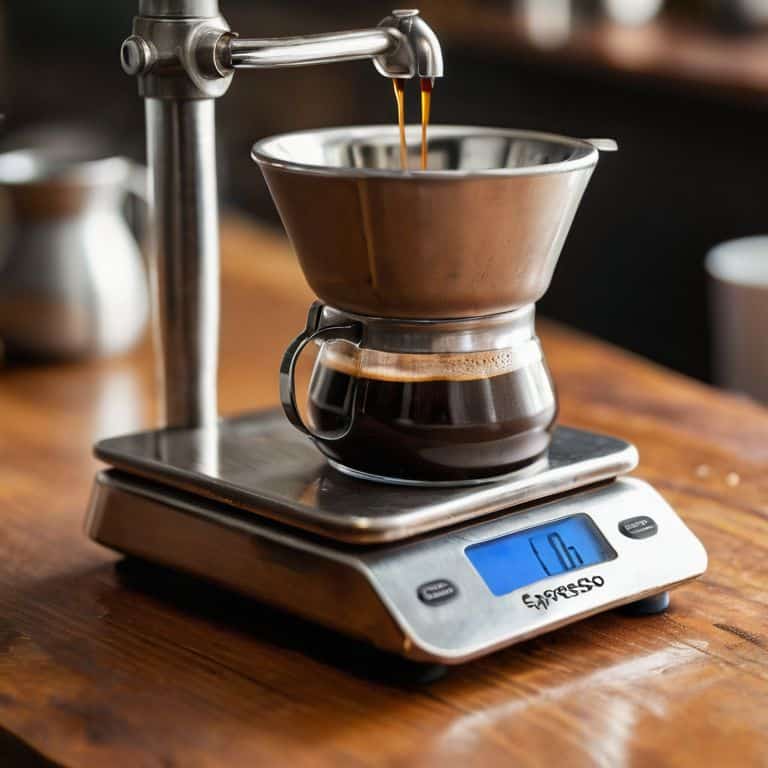
- Start with a solid foundation: invest in a scale that measures to the gram, and use it to measure both your coffee and water with precision
- Experiment with different roast levels to find the perfect balance for your taste buds, but remember that darker roasts require slightly less coffee to water ratio
- Temperature is everything: aim for a brewing temperature between 195°F and 205°F, and adjust your grind size accordingly to ensure optimal extraction
- Don’t underestimate the power of shot volume: a traditional double shot should be around 2 ounces, but feel free to experiment with different volumes to find your perfect cup
- Keep it consistent: once you’ve found your ideal brew ratio, stick to it and make adjustments in small increments – remember, the perfect shot is all about balance and harmony
Key Takeaways for Espresso Perfection
Mastering the espresso brew ratio is crucial for unlocking a rich and balanced flavor, with the ideal ratio ranging from 1:1.5 to 1:2.5, depending on personal taste and equipment
Temperature control is essential, with the optimal brewing temperature falling between 195°F and 205°F, and even small deviations capable of significantly impacting the final product
Precision in every step, from grind size to shot volume, is vital for achieving the ‘god shot’, with consistency and attention to detail being the keys to reproducing exceptional results time and time again
The Heart of Espresso
Understanding espresso brew ratios is not just about numbers, it’s about nuance – it’s the delicate balance between coffee and water that elevates a shot from mere mortal brew to sublime, life-changing elixir.
Julian Vale
Unlocking the Perfect Shot: A Conclusion
As we’ve explored the world of espresso brew ratios, it’s clear that nailing the perfect shot is a delicate balance of art and science. From understanding the importance of espresso shot volume to calculating the ideal coffee to water ratio, and from optimizing temperature to considering the impact of coffee bean roast level, every detail matters. By mastering these elements, you’ll be well on your way to creating cafe-quality espresso in the comfort of your own home. It’s about precision and passion, combining to create an unforgettable cup of coffee.
So, as you continue on your journey to espresso perfection, remember that the pursuit of the god shot is a lifelong passion, not a destination. With every shot, you’re not just brewing coffee – you’re crafting an experience. Keep experimenting, keep pushing the boundaries of what’s possible, and most importantly, keep enjoying the journey. For in the world of espresso, it’s the perfect balance of flavor and technique that makes every sip a delight, and every shot a masterpiece.
Frequently Asked Questions
How do I determine the ideal espresso brew ratio for my specific coffee beans?
To determine the ideal espresso brew ratio for your specific coffee beans, start by experimenting with the classic 1:2 to 1:3 range, then adjust based on the bean’s origin, roast level, and your personal taste preferences – I recommend beginning with a ratio of 1:2.2 and tweaking from there.
What's the relationship between espresso shot volume and the optimal coffee to water ratio?
The relationship between espresso shot volume and optimal coffee to water ratio is intricately linked. As shot volume increases, the ratio may need adjustment to maintain balance. I’ve found that for every 0.5 oz increase in shot volume, the coffee to water ratio should be tweaked by about 0.5-1% to preserve the perfect extraction.
Can small variations in espresso brew ratio really make a noticeable difference in the flavor of my shots?
Trust me, even a 0.1 gram deviation in your espresso brew ratio can drastically alter the flavor profile. I’ve spent years perfecting my craft, and I can assure you that such tiny variations can mean the difference between a balanced shot and a bitter one. It’s all about finding that sweet spot, and I’m here to guide you through it.

